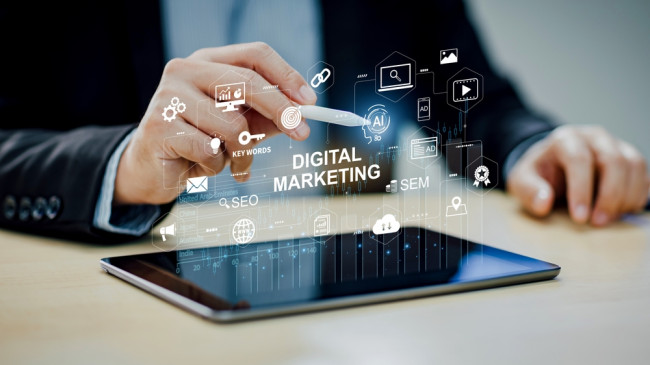In recent years, the emergence of artificial intelligence (AI) has brought about a paradigm shift in various industries, and video editing is no exception. AI video editing is transforming the way content creators, filmmakers, and marketers approach their work. From automating tedious tasks to enhancing creativity, AI-driven tools are making video editing faster, more efficient, and accessible to a broader audience. In this article, we will explore the key aspects of AI video editing, its benefits, and how it is shaping the future of content creation.

What is AI Video Editing?
AI video editing refers to the use of artificial intelligence and machine learning algorithms to automate and enhance various aspects of the video editing process. These technologies can analyze video content, recognize patterns, and make decisions that traditionally required human intervention. AI-powered video editing tools can handle tasks such as cutting, trimming, color correction, audio syncing, and even adding visual effects. The goal is to streamline the editing process, allowing creators to focus on the artistic aspects of their work.
How AI Video Editing Works
AI video editing tools use advanced algorithms to process and analyze video data. Here's a breakdown of how these tools typically work:
Data Analysis: AI algorithms analyze the video footage, identifying key elements such as objects, faces, and movements. This analysis helps the AI understand the content and context of the video.
Automated Editing: Once the AI has analyzed the footage, it can automatically perform tasks such as cutting and trimming clips, applying transitions, and adjusting color and lighting. Some tools can even generate a rough cut of the video, which can then be refined by the editor.
Content Recognition: AI can recognize specific content within a video, such as logos, faces, or speech. This capability allows for automated tagging, metadata generation, and even content replacement or enhancement.
Enhanced Creativity: AI tools can suggest creative edits, such as adding music, visual effects, or filters, based on the content of the video. This feature helps editors experiment with different styles and effects quickly.
Real-time Collaboration: AI-driven platforms often offer real-time collaboration features, allowing multiple users to work on a project simultaneously. AI can assist in merging edits, resolving conflicts, and ensuring consistency across the project.
Benefits of AI Video Editing
AI video editing offers numerous advantages, making it an invaluable tool for content creators and businesses alike:
Time Efficiency: One of the most significant benefits of AI video editing is the time it saves. Traditional video editing can be a time-consuming process, especially for long-form content. AI tools can automate repetitive tasks, significantly reducing the time required to complete a project.
Cost-Effective: AI video editing tools can help reduce production costs by minimizing the need for extensive manual labor. Smaller teams or even solo creators can produce high-quality videos without the need for specialized skills or expensive software.
Accessibility: AI video editing tools are designed to be user-friendly, making video editing more accessible to individuals with little to no experience. This democratization of video editing allows more people to create professional-looking content.
Enhanced Creativity: AI-driven tools can suggest creative edits and effects that the editor may not have considered. This feature encourages experimentation and can lead to more innovative and visually appealing videos.
Consistency: AI algorithms ensure consistency in video editing, especially in projects that require a uniform look and feel. This is particularly useful for brands and businesses that need to maintain a consistent visual identity across multiple videos.
Scalability: For businesses that need to produce a large volume of video content, AI video editing tools can scale efficiently. Whether it's for marketing campaigns, training videos, or social media content, AI can handle the workload without compromising quality.
Popular AI Video Editing Tools
Several AI-powered video editing tools have gained popularity in recent years. Here are a few notable ones:
Adobe Premiere Pro with Adobe Sensei: Adobe Premiere Pro is a leading video editing software that integrates AI through Adobe Sensei. This AI engine automates tasks like color correction, audio mixing, and scene editing, making the editing process more efficient.
Magisto: Magisto is an AI-driven video editing platform designed for social media content creators. It automatically edits videos based on the chosen style and theme, making it ideal for creating engaging short-form videos.
Lumen5: Lumen5 is a video creation platform that uses AI to transform text content into videos. It's particularly popular among marketers and bloggers who want to repurpose their written content into video format quickly.
Pictory: Pictory is an Video Creator Online tool that allows users to create and edit videos using text. It automatically generates video content from scripts, making it easy for creators to produce videos without extensive editing skills.
RunwayML: RunwayML is an AI-powered platform that offers a wide range of creative tools for video editing, including background removal, object detection, and style transfer. It's favored by artists and filmmakers looking to experiment with AI-driven effects.
The Future of AI Video Editing
As AI technology continues to evolve, the future of video editing looks promising. Here are some trends and developments we can expect:
Advanced Content Recognition: AI algorithms will become even more sophisticated in recognizing and understanding video content. This will enable more precise edits, automated content tagging, and personalized video experiences.
AI-Driven Storytelling: AI will play a more significant role in storytelling, assisting creators in structuring narratives, selecting the best shots, and even suggesting plot developments based on audience preferences.
Real-Time Editing: The future may see AI-powered tools capable of real-time editing during live broadcasts or events. This would revolutionize industries such as sports, news, and entertainment, where quick turnaround times are essential.
Integration with Virtual and Augmented Reality: AI video editing tools will likely integrate with virtual and augmented reality (VR/AR) platforms, allowing creators to edit immersive content more efficiently.
Ethical Considerations: As AI video editing becomes more prevalent, ethical concerns will arise, particularly regarding deepfakes and content manipulation. The industry will need to establish guidelines and regulations to ensure responsible use of AI in video production.
Conclusion
AI video editing is revolutionizing the creative industry by making video production faster, more efficient, and accessible to a broader audience. From automating mundane tasks to enhancing creativity, AI-driven tools are empowering content creators to produce high-quality videos with ease. As technology continues to advance, the future of AI video editing holds even more exciting possibilities, promising to reshape the way we create and consume video content. Whether you're a seasoned filmmaker or a novice content creator, AI video editing offers a powerful toolset to bring your creative vision to life.
extensive editing skills.
RunwayML: RunwayML is an AI-powered platform that offers a wide range of creative tools for video editing, including background removal, object detection, and style transfer. It's favored by artists and filmmakers looking to experiment with AI-driven effects.
The Future of AI Video Editing
As AI technology continues to evolve, the future of video editing looks promising. Here are some trends and developments we can expect:
Advanced Content Recognition: AI algorithms will become even more sophisticated in recognizing and understanding video content. This will enable more precise edits, automated content tagging, and personalized video experiences.
AI-Driven Storytelling: AI will play a more significant role in storytelling, assisting creators in structuring narratives, selecting the best shots, and even suggesting plot developments based on audience preferences.
Real-Time Editing: The future may see AI-powered tools capable of real-time editing during live broadcasts or events. This would revolutionize industries such as sports, news, and entertainment, where quick turnaround times are essential.
Integration with Virtual and Augmented Reality: AI video editing tools will likely integrate with virtual and augmented reality (VR/AR) platforms, allowing creators to edit immersive content more efficiently.
Ethical Considerations: As AI video editing becomes more prevalent, ethical concerns will arise, particularly regarding deepfakes and content manipulation. The industry will need to establish guidelines and regulations to ensure responsible use of AI in video production.
Conclusion
AI video editing is revolutionizing the creative industry by making video production faster, more efficient, and accessible to a broader audience. From automating mundane tasks to enhancing creativity, AI-driven tools are empowering content creators to produce high-quality videos with ease. As technology continues to advance, the future of AI video editing holds even more exciting possibilities, promising to reshape the way we create and consume video content. Whether you're a seasoned filmmaker or a novice content creator, AI video editing offers a powerful toolset to bring your creative vision to life.
















